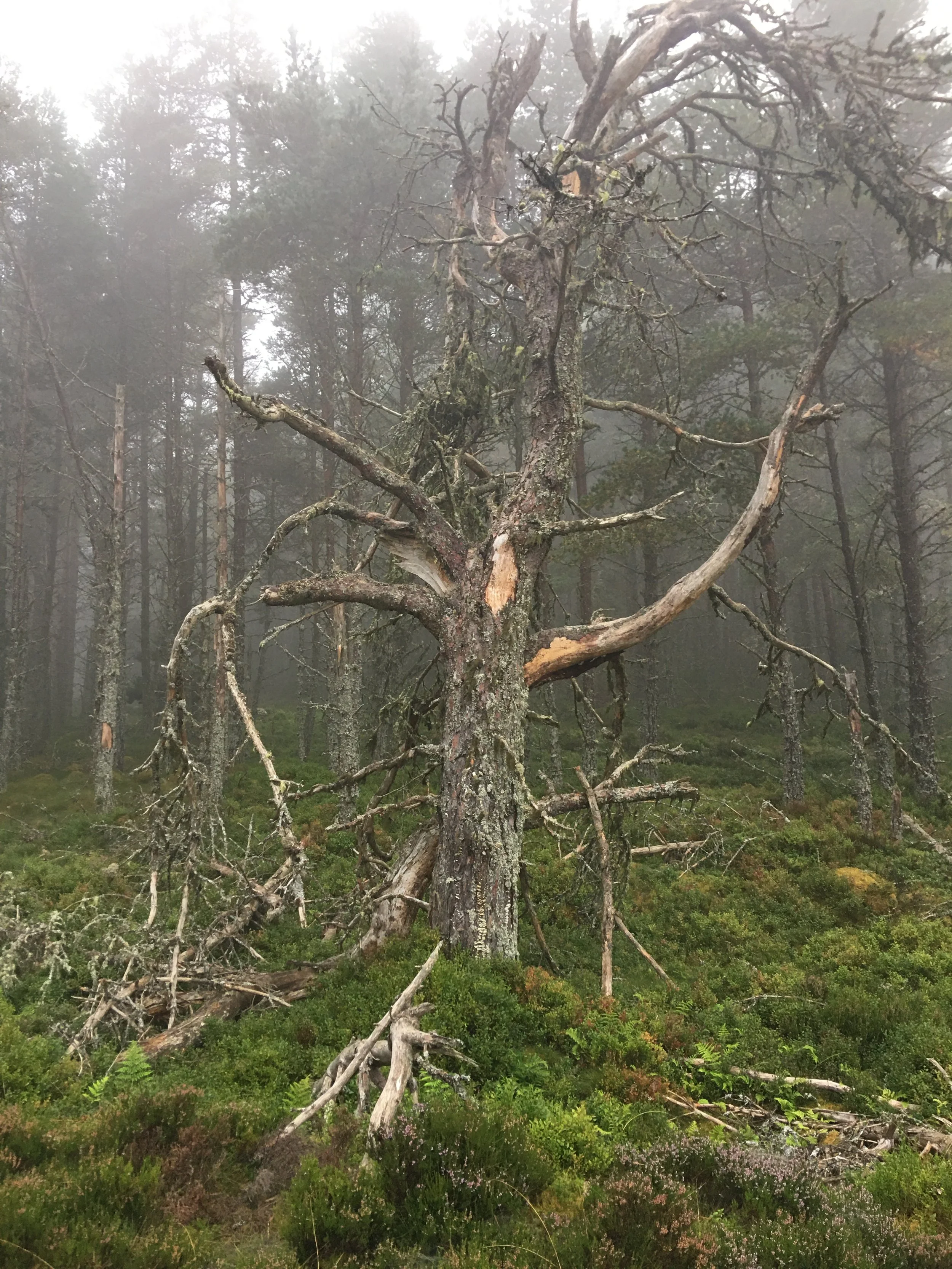Trees & Self Reflection.
Tracing Memory Through Trees and Bone.
I grew up on the edge of Glencharrnoch woods in the Cairngorms, in a small village surrounded by lochs, glens, and trees that seemed to breathe with a quiet, ancient wisdom. As a child, I would walk through the woods every day to get to school, to take our family dog Angus for long walks, to explore with my brother and our friends. These woods were more than a backdrop to my childhood; they were a refuge. Even in moments of deep loneliness or emotional upheaval, they offered something I couldn't name at the time - a sanctuary, a space where I felt most myself.
Looking back now, I understand more of what I couldn't articulate then. Only recently have I come to realise that I am autistic. It explained so much about the struggles I faced growing up - the intense sensory experiences, the feeling of not quite fitting in, the emotional overwhelm that would hit out of nowhere. As girls, studies have shown that we learn young how to "mask," how to fold ourselves into what the world expects of us, and in doing so, we often lose touch with what is real within us. The forest was one of the few places where I didn't have to pretend. The textures, the sounds, the sense of space and distance, even the silence - all of it grounded me, gave me something to return to.
I was also diagnosed with scoliosis at the age of 25. But it wasn't a sudden discovery. My mum had taken me to the doctor when I was about ten or eleven because she noticed the unevenness in my waist and the way I seemed to favour one side. The doctor dismissed it as growing pains and told us I'd grow out of it. I never did. The physical discomfort became something I simply lived with, absorbed into my sense of normal. It wasn't until years later, when I sought answers on my own, that the curvature in my spine was finally recognised for what it was.
Both of these experiences - of being unseen, of being subtly told that my body was either too much or not enough - are carried in me still. And yet, in the woods, especially those of my childhood, I never felt judged. The ancient pines and shifting canopies held me without question. I think that’s why, even now, I seek out those "wild" landscapes - places that seem untouched by human interference, where nature moves according to its own rhythms. They feel honest. And in their honesty, I find peace.
As I explore my art practice through the MA, I’ve noticed this connection between trees and the human body becoming more present in my work. The symbolism of the spine has started to surface - not just as a physical structure but as a metaphor for endurance, memory, and belonging. The spine as our own inner tree, supporting us even when it bends or falters. When I paint trees now, especially in ink, they often take on forms that mirror vertebrae or twisted trunks, with lines that echo both fragility and strength.
The more I read, the more these ideas circle back and connect. Philosophies that describe the spine as a sacred axis, an inner pillar linking heaven and earth, resonate deeply with me (Yoganama, 2020; Body Divine Yoga, 2012). There's something poetic in the way trees and humans both hold stories in their bodies - rings in trunks, knots and scars, spines curved by experience. I’ve come across writings on spinal catastrophism and how the spine might be seen as an archive of evolutionary and environmental trauma (Moynihan, 2019). I find it strangely comforting, as though my own pain isn’t just mine but part of something older, larger. Like the woods of my childhood, it reminds me that I am part of a longer continuum.
These threads are slowly finding their way into my paintings. I’m beginning to explore how I might represent this connection more consciously - perhaps through layering ink to create tree forms that simultaneously suggest the human skeleton, or through playing with composition to evoke both rootedness and movement. What was once an intuitive pull towards these forms is now becoming something more intentional. I want my work to hold space for others who might also feel out of place, disconnected, or unseen. Just as the forest held me.
This journey is still unfolding, but I know the landscape will always be part of my practice. The woods of Glencharrnoch are not just a memory - they are a blueprint, a grounding force that continues to shape how I see and move through the world. As I continue to paint and write and reflect, I do so with the quiet strength of those trees behind me, their branches stretched skyward, their roots buried deep. In them, I see my own path: bent, resilient, and very much alive.
References.
Amanda Thomson (2022) Belonging: Natural histories of place, identity and home. Canongate Books.
Cleghorn, E. (2021) Unwell Women: A Journey Through Medicine and Myth in a Man-Made World. Weidenfeld & Nicolson.
Moynihan, T. (2019) Spinal Catastrophism: A Secret History. Urbanomic.
Yoganama (2020) 'The Spiritual Spine & Nadi System'. Available at: https://yoganama.com/spiritual-spine-nadi-system/ (Accessed: 21 April 2025).
Body Divine Yoga (2012) 'The Sacred Spine: Our Axis Between Heaven and Earth'. Available at: https://bodydivineyoga.wordpress.com/2012/10/16/the-sacred-spine-our-axis-between-heaven-and-earth/ (Accessed: 21 April 2025).

